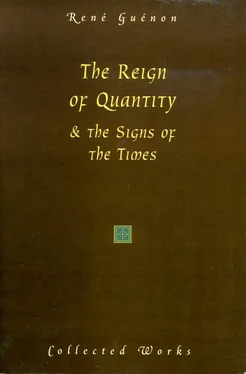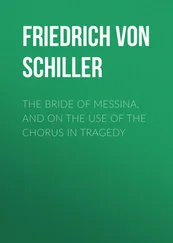So much being established in principle, certain consequences may easily be deduced in connection with what could be called the practical use of symbols; but here a consideration of a more special kind must first be introduced, namely, that of the case in which the two contrary aspects are taken as ‘benefic’ and ‘malefic’ respectively. It must be made clear that these two terms are used for want of any better, as on a previous occasion; they have in fact the disadvantage of leading to a supposition that some more or less ‘moral’ interpretation is admitted, whereas really there is nothing of the kind, and the words must be understood here in a purely ‘technical’ sense. Furthermore, it must be clearly understood that the ‘benefic’ or ‘malefic’ quality is not attached absolutely to one or the other of the two aspects, because it appertains only to a special application which is such that all opposition, of whatever kind, could not possibly be brought indifferently within its range, and also because this quality would in any case necessarily disappear when the point of view of opposition is replaced by that of complementarism, to which any such consideration is wholly strange. Within these limits and after taking account of these reservations, the point of view of ‘beneficence’ or ‘maleficence’ has its normal place among all others; but it is also from this very point of view, or rather from the misuses to which it leads, that the subversion of the interpretation and use of symbolism now to be referred to may arise, a subversion constituting one of the ‘marks’ characteristic of everything that is derived, consciously or otherwise, from the domain of the ‘counter-initiation’, or is more or less directly subject to its influence.
This kind of subversion may consist either in attributing to the ‘malefic’ aspect, while continuing to recognize it as such, the place that normally belongs to the ‘benefic’ aspect, even to the point of giving it a sort of supremacy over the latter, or alternatively in attributing to symbols a meaning opposite to their legitimate meaning, by treating as ‘benefic’ the aspect that is really ‘malefic’, or the other way round. It must also be noted that, in accordance with what was said above, a subversion of this kind may not appear visibly in the representation of the symbols, because there are some in which the two contrary aspects are not marked by any outward difference recognizable at first sight. Thus, in the figurations related to what is commonly but very improperly called ‘serpent-worship’, it would often be impossible, at least if only the serpent itself were considered, to say a priori whether the Agathodaimón or the Kakodaimón is symbolized; hence many misunderstandings arise, especially on the part of those who are ignorant of the dual significance of the serpent and are tempted to see in it everywhere and always only a ‘malefic’ symbol, as has been in fact the case for a long time past with the generality of Westerners; [129] For the same reason the Far-Eastern Dragon itself, really a symbol of the Word, has often been taken by Western ignorance to be a ‘diabolical’ symbol.
and what has been said of the serpent could equally well be applied to many other symbolical animals, for it has become a habit for one reason or another no longer to consider more than one of the two opposed aspects in reality borne by these animals. In the case of symbols that can be made to take up two opposite positions, and especially those that are reduced to geometrical forms, it might be thought that the difference ought to be much more clearly apparent; nevertheless it is not always so, because the two positions of the same symbol are each capable of carrying a legitimate meaning, also because their relation is not necessarily that of ‘beneficence’ and ‘maleficence’, for, let it be said once more, that relation is only a particular application among all others. What it is important to know in such a case is whether there can be said to be a real intention to ‘invert’ in such a way as formally to contradict the normal and legitimate value of the symbol; that is why, for example, the use of the inverted triangle is very far from being always a sign of ‘black magic’ as some people think, [130] Instances can even be found in which the inverted triangles occurring among the alchemical symbols of the elements have been interpreted in that sense.
although it certainly is so in some cases, namely, whenever it is accompanied by an intention to adopt an attitude opposed to what the triangle represents when its apex is turned upward. Incidentally, it may be remarked that an intentional ‘inversion’ of this kind can also be applied to words or to formulas, in such a way as to form various sorts of reversed mantras , as may be seen in certain of the practices of sorcery, even in the simple ‘country witchcraft’ such as still exists in the West.
Thus it can be seen that the question of the inversion of symbols is rather complicated, and it might well also be described as rather delicate; for in order to know what the real position is in any particular case it is necessary to examine, not so much the figurations seen in what may be called their ‘materiality’, as the accompanying interpretations which express the intention that dictated their adoption. And furthermore, the cleverest and most dangerous subversion is not the one that betrays itself by too obvious singularities easily noticed by anyone, but it is the one that deforms the meaning of symbols or reverses their import while making no change in their outward appearance. But the most diabolical trick of all is perhaps that which consists in attributing to the orthodox symbolism itself, as it exists in truly traditional organizations and more especially in initiatic organizations (the latter being specially liable to attack in this case), the inverted interpretation that is specifically characteristic of the ‘counter-initiation’; and the ‘counter-initiation’ does not fail to take advantage of this method of promoting confusions and uncertainties when it can derive some profit from them. This is really the whole secret of certain campaigns, very significant in view of the character of the present period, conducted either against esoterism in general or against any one initiatic form in particular, with the unconscious help of people who would be very astonished, and even appalled, if they could become aware of the use that is being made of them; unfortunately however it sometimes so happens that people who imagine that they are fighting the devil, whatever their particular notion of the devil may be, are thus turned, without the least suspicion of the fact on their part, into his best servants!
31
Tradition and Traditionalism
The falsification of everything has been shown to be one of the characteristic features of our period, but falsification is not in itself subversion properly so called, though contributing fairly directly to the preparation for it. Perhaps the clearest indication of this is what may be called the falsification of language, taking the form of the misuse of certain words that have been diverted from their true meaning; misuse of this kind is to some extent imposed by constant suggestion on the part of everyone who exercises any kind of influence over the mentality of the public. It is a case of something more than the mere degeneration alluded to earlier, whereby many words have come to lose their original qualitative meaning, keeping only one that is purely quantitative; it is more a question of a ‘diversion’, whereby words are applied to things that they do not fit in any way, and sometimes in a sense directly opposed to their normal meaning. This is one of the most obvious symptoms of the intellectual confusion that reigns everywhere in the present world; but it must not be forgotten that this very confusion is willed by that which lies hidden behind the whole modern deviation; this thought obtrudes itself particularly in view of the simultaneous appearance in many different quarters of attempts to make illegitimate use of the very idea of ‘tradition’ by people who want improperly to assimilate its significance to their own conceptions in one domain or another. Of course there is no question of suspecting the good faith of any particular party, for very often it may be a case of mere incomprehension and nothing more, the ignorance of most of our contemporaries about anything possessing a truly traditional character being so complete that this need cause no surprise. Nevertheless it must also be recognized that such errors of interpretation and involuntary misconceptions serve the purpose of certain ‘plans’ so well that it is permissible to wonder whether their growing diffusion may not be due to some of the ‘suggestions’ that dominate the modern mentality, all of which lead ultimately to nothing less than the destruction of all that is tradition in the true sense of the word.
Читать дальше











